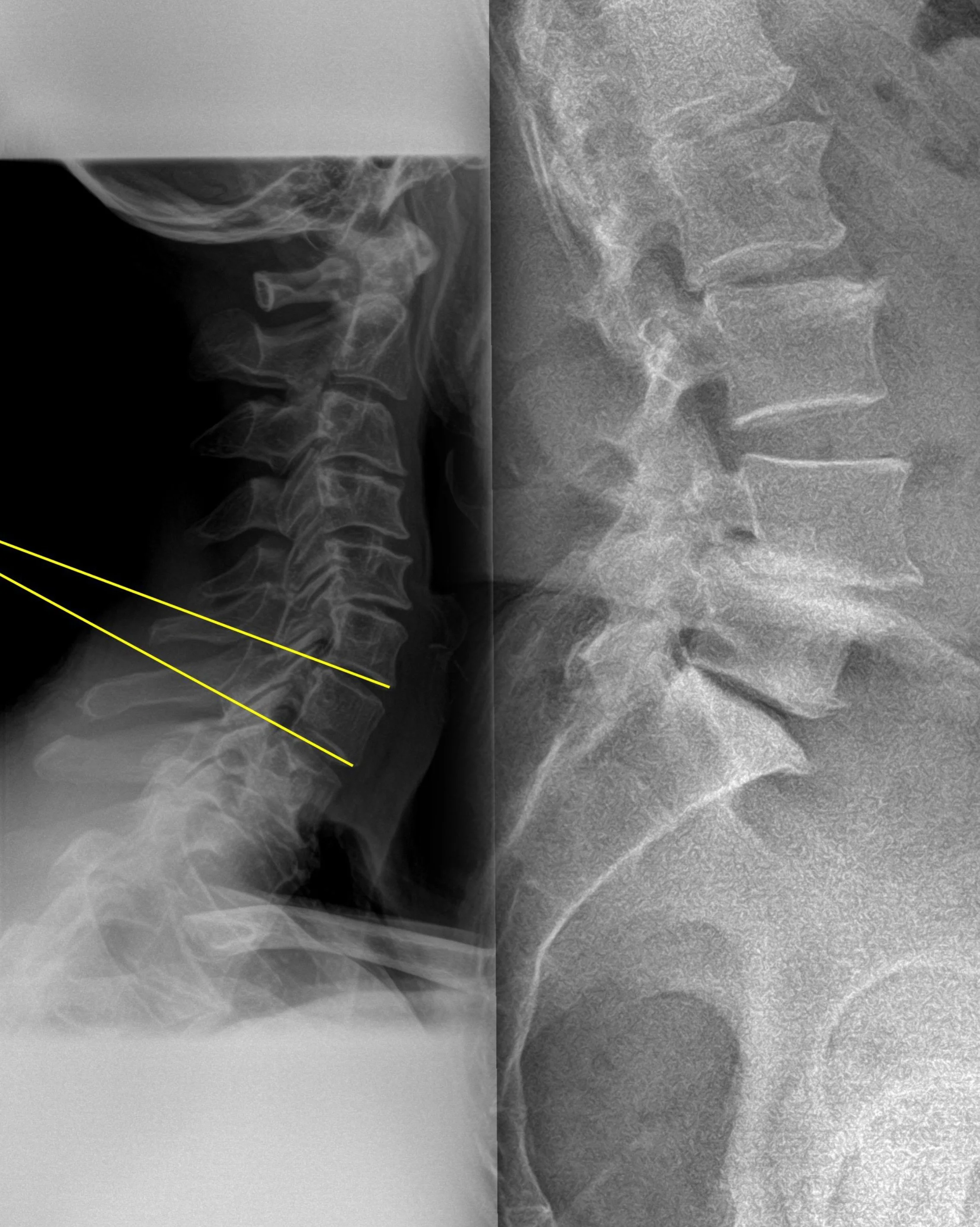X-ray showing misalignment at lower lumbar and neck, likely caused by an old accident. Untreated, this can lead to arthritis — which is why we’re taking a proactive, collaborative approach
Behind the Scenes: My Recovery Plan for L4/L5 and C5/C6
This post is a little different—it's personal. A recent visit to a local chiropractor revealed something I wasn’t expecting: issues at L4/L5 in my lower back and C6 in my cervical spine. Even though I’ve trained consistently for years, an accident over a decade ago (that I don’t even remember) likely contributed to these structural issues.
What the X-Rays Revealed
The lumbar X-ray showed misalignment and compression at the L4/L5 junction. While I haven’t experienced major symptoms thanks to consistent training, this could lead to arthritis or more serious complications if left untreated. The cervical image showed a loss of curve and alignment around C6, which could impact posture, nerve function, and movement control over time.
The Collaborative Approach
I’m teaming up with a local chiropractor for a two-pronged strategy. While he works on spinal alignment and decompression, I’m focusing on my side of the recovery equation: mobility, soft tissue work, and strength training.
- Foam rolling and trigger point release (especially lower back, glutes, and neck)
- Spinal mobility drills
- Core and postural strengthening exercises
- Modified loading strategies in training to avoid aggravation
We’re aiming to beat the expected timeline for improvement and will take new X-rays in 8 weeks to track progress.
Why Collaboration Matters
Too often, people think they have to choose between chiropractic care, physical therapy, or training. But the best results often come from combining them. As a coach, I regularly work with clients recovering from injury or managing chronic conditions. And the lesson here is clear: alignment and movement quality go hand in hand.
What This Means for You
If you’re dealing with pain, stiffness, or an old injury, don’t wait for things to get worse. With the right strategy—and the right support—you can stay strong, mobile, and pain-free. This case is a reminder that collaborative care works, especially when training is used not just to get fit, but to heal better.
Follow the journey—I’ll be updating my progress over the next 8 weeks.

